New hydro scheme proposal on Wild Land Area boundary
Trust staff report on a proposed pumped hydro scheme at Lochan na h’Earba following a site visit to meet the developer and discuss the proposals.
Overview
A new large-scale ‘long duration’ electricity pumped storage hydro-electric scheme of up to 900MW capacity with 33 GWhr of electricity storage (36 hours of generation at 900 MW) (the ‘Earba Project’) is being proposed by Gilkes Energy (‘Gilkes’) and if it proceeds it will be the largest such scheme in the UK.
As a wild places charity the Trust takes an interest in new developments that could substantially impact wild places. The Earba Project is a large-scale development which is being proposed within the boundary of the Mamores-Alder-Rannoch Wild Land Area. We wanted to know what was proposed and what the impacts of the development might be on the landscape, nature and people’s ability to enjoy this area.
Where is the proposed site?
The proposed site is on the Ardverikie Estate and would affect Lochan na h’Earba, a loch to the south of Loch Laggan in the Scottish Highlands, and Loch a’Bhealaich Leamhain, a smaller loch, to the south of Lochan na h’Earba.
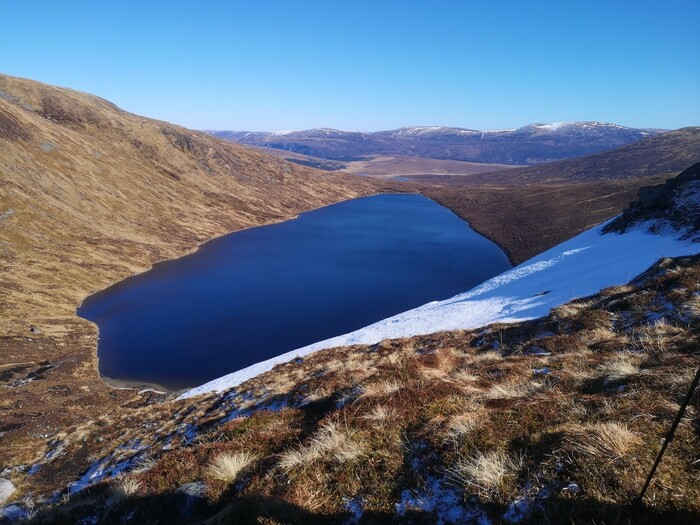 ^ Loch a’Bhealaich Leamhain
^ Loch a’Bhealaich Leamhain
How will it work?
The scheme relies on storing water in a lower and upper reservoir and moving water between these reservoirs. The plan would be (a) to raise the level of water in Lochan na h’Earba by up to 20m by constructing two new dams and (b) to raise the level of water in Loch a’ Bhealaich Leamhain by up to 65m by constructing a dam at its eastern end.
A powerhouse would be constructed on the south shore of Lochan na h’Earba, with a surface building cut into the hillside and an underground tunnel constructed between the two reservoirs. When demand for electricity is low (and therefore there is surplus energy on the grid) water will be pumped from the lower reservoir through the tunnel to the upper reservoir where it will be stored until it is released during times of peak demand. When the water is released, it will flow through turbines and a motor in the powerhouse, generating electricity.
Electricity generated at the pumped hydro scheme will be transmitted to the national grid via an underground connection. As we understand it, the route of the underground cable would go along the south shore of Lochan na h’Earba before continuing generally along the line of existing tracks through plantation forestry.
New access tracks, for construction access and on-going maintenance at the site are also proposed. These tracks may be up to six metres wide to enable two-way construction traffic to pass. In addition, during construction, there would be construction compounds (to keep equipment) and borrow pits (areas where stone has been excavated on site).
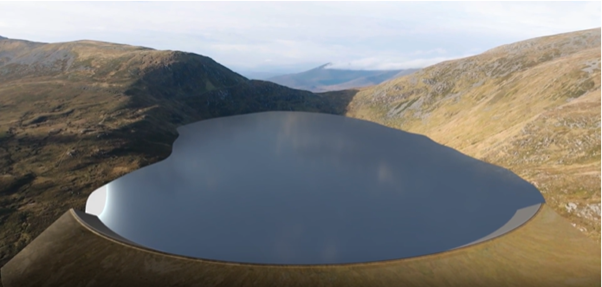
^ Gilkes’ graphic representation of the project at Loch a’Bhealaich Leamhain looking north west (Gilkes Energy - The Hydro Energy Earba Storage Scheme)
What is the role of pumped hydro in meeting net zero targets?
In order to decarbonise electricity generation in the UK, large-scale long-term electricity storage is required to displace the predominantly gas-powered electricity generation that currently bridges the gap between the supply of intermittent renewable energy (predominantly wind energy) and electricity demand. Pumped storage hydro has one of the highest cycle efficiencies of any electricity storage process.
What did we learn during the site visit?
We met a representative from Gilkes and a consultant responsible for overseeing the application process at the shores of Lochan na h’Earba to discuss the project and to see the proposed site in person. From our discussions, the policy team were left with the impression that both Gilkes and Ardverikie Estate were making efforts to ensure that the project is sensitively designed to mitigate the impacts. However, a number of issues continue to concern us.
Drawdown scars
Drawdown scars are bare areas around the shores of reservoirs created by the constant rising and lowering of the water level which prevents anything from growing. The drawdown scars will be particularly significant at Loch a’Bhealaich Leamhain (the upper reservoir) where the level of the loch will be raised by up to 65m and the gradual slope of the Loch’s southern shore means that the drawdown scar will cover a large area. The picture below demonstrates the extent to which the loch will be raised (light blue) and gives an indication of the scale of the potential drawdown scar. 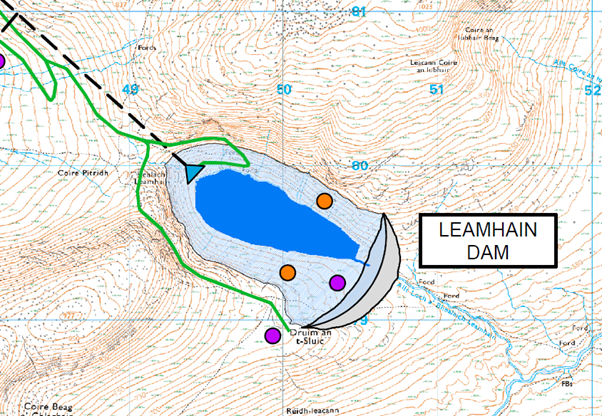 Gilkes has said that it intends to mitigate the drawdown scars as far as practicable, however, it is not possible to fully mitigate the impacts so they are an inevitable consequence of this type of proposal.
Gilkes has said that it intends to mitigate the drawdown scars as far as practicable, however, it is not possible to fully mitigate the impacts so they are an inevitable consequence of this type of proposal.
Access tracks
The project would entail a significant length of new access track along the length of Lochan na h’Earba and up the slope to Loch a’Bhealaich Leamhain. It is likely that these access tracks will be proposed as permanent aspects of the project as they will be needed to enable access for site maintenance. Such tracks are likely to change the character of the area entirely.
Powerhouse
The majority of the powerhouse will be in underground shafts, but a surface building will be necessary. This will be built in a cutting into the slope by Lochan na h’Earba, with the roofline below the level of the adjacent land. This will make it hidden from views along the Earba glen. New native species tree planting around the powerhouse would also mitigate its visual impact.
The proposed hydro scheme would be continuously manned, with daily visits to the powerhouse, weekly visits to the dams and other attendance for maintenance. This regular traffic throughout the project will certainly detract from the sense of serenity in the area.
Wildness
An important outcome of the site visit for the policy team was to get an impression of the wildness of the area. We were lucky enough to have timed our visit with a spectacularly bright and crisp day which provided views across some of the surrounding Wild Land Areas.
From elevated views the wild character of the Mamores-Alder-Rannoch Wild Land Area is amplified by the fact that it seems to extend far into the distance and into other Wild Land Areas. Introducing large-scale infrastructure (and its associated impacts) will significantly impact the sense of remoteness, sanctuary, challenge and risk (key characteristics of the Wild Land Area) in this area.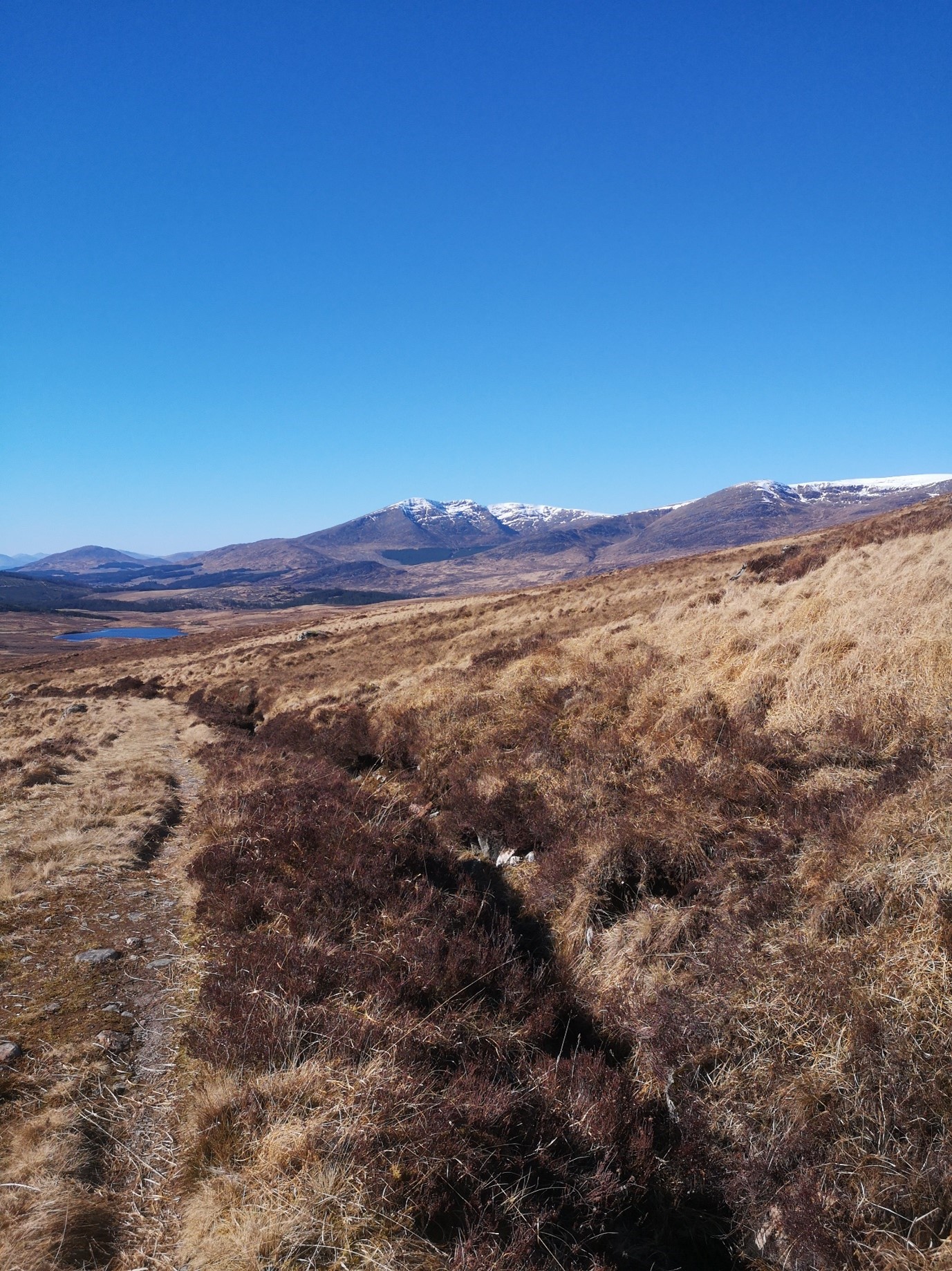 ^ Below Loch a’Bhealaich Leamhain across to Braeroy - Glenshirra - Creag Meagaidh WLA
^ Below Loch a’Bhealaich Leamhain across to Braeroy - Glenshirra - Creag Meagaidh WLA
We intend to communicate our concerns to the contractor, the landowner and the Highland Council (as statutory consultees) at this early stage and will continue to closely monitor the project as more information becomes available.
Have your say
We encourage anyone with a view on the proposals to respond to the planning application, if and when this proceeds. The proposals are currently at scoping stage and you can find the documents on the Energy Consents Unit website (ECU ref. ECU00004731) or the Highland Council’s planning portal (ref. 23/00810/SCOP). Please feel free to contact us with your views as these can help to inform our own position.
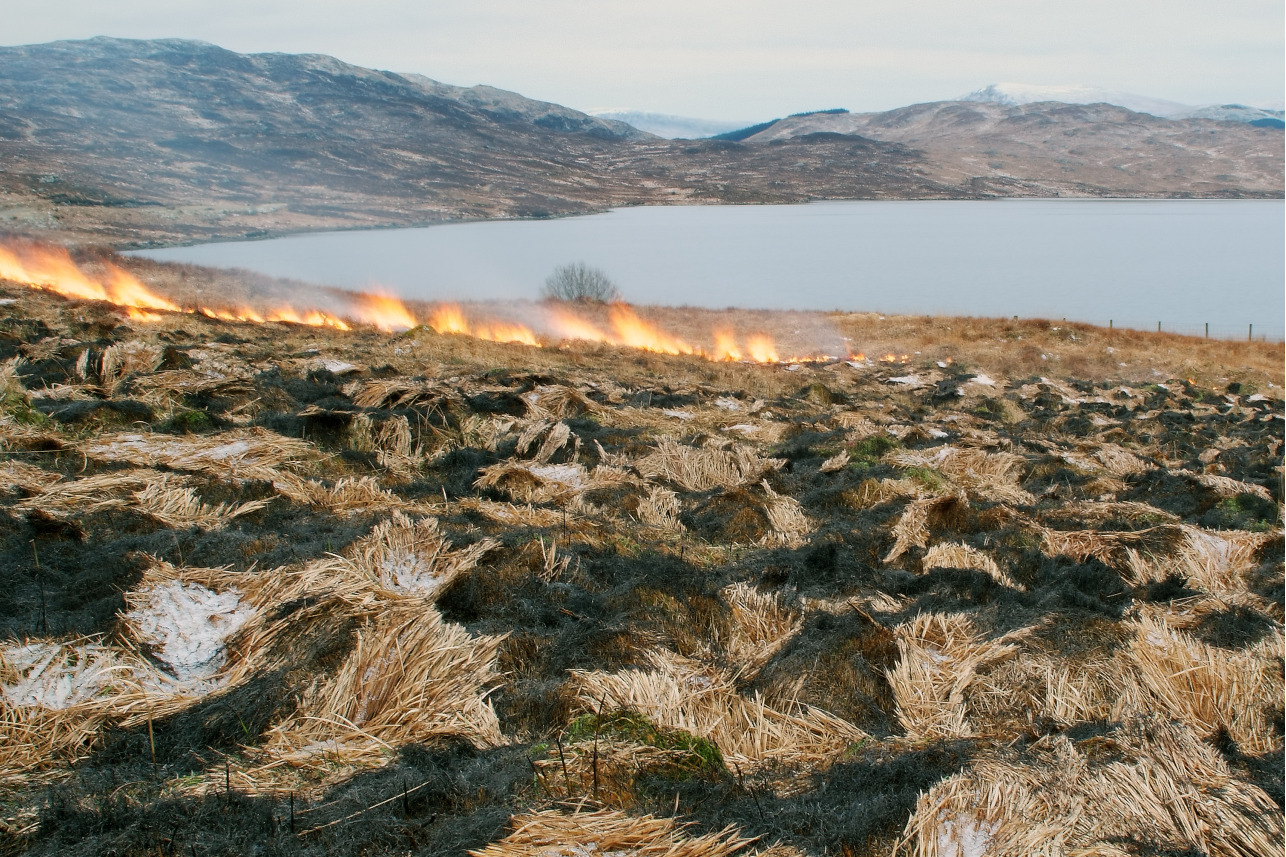
Help us defend wild places and campaign for their protection
Please donate to our campaign fund

